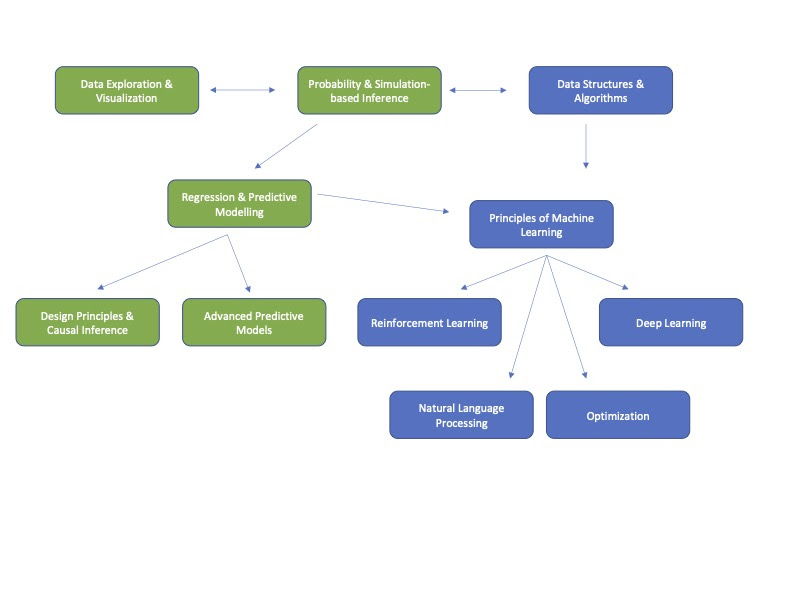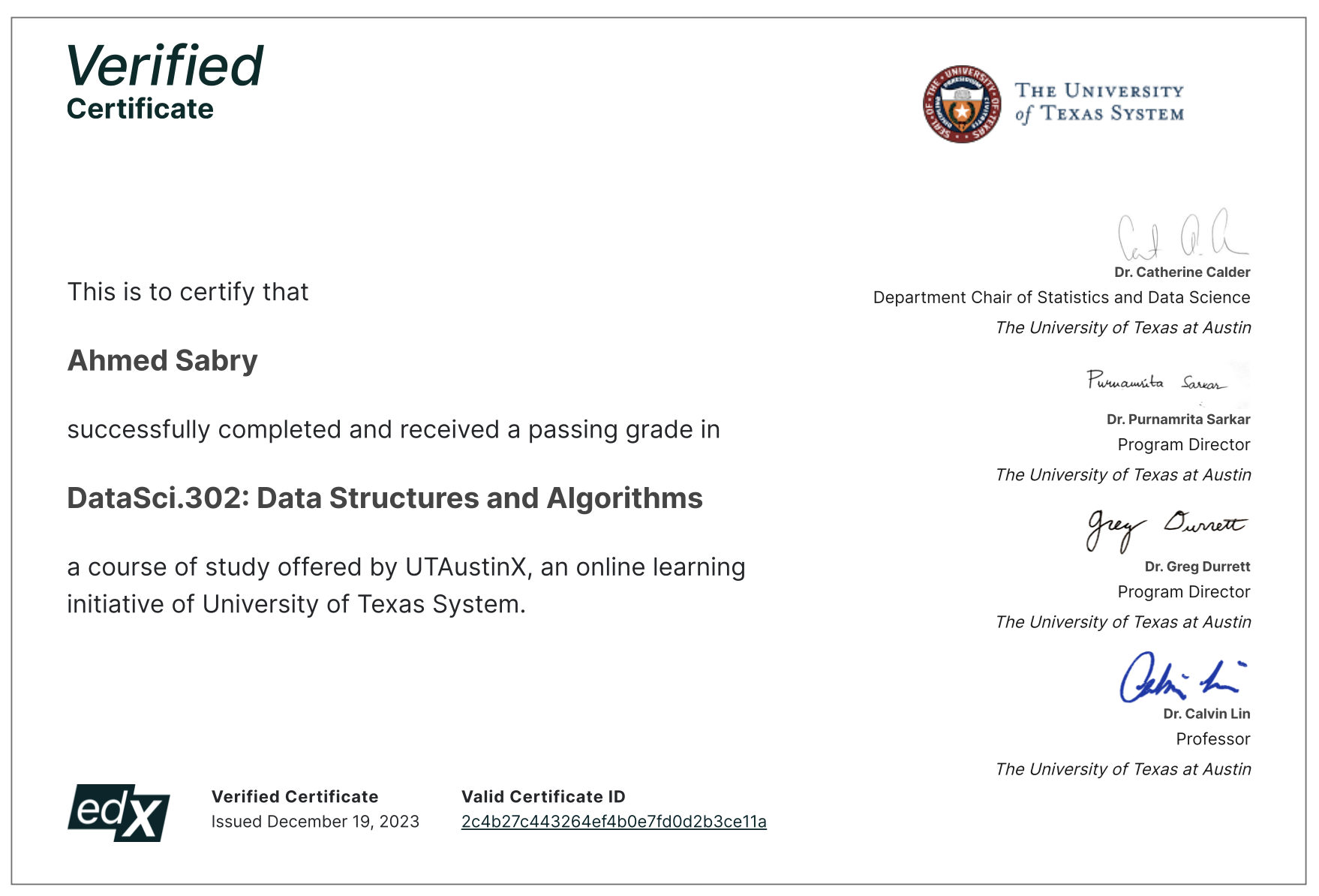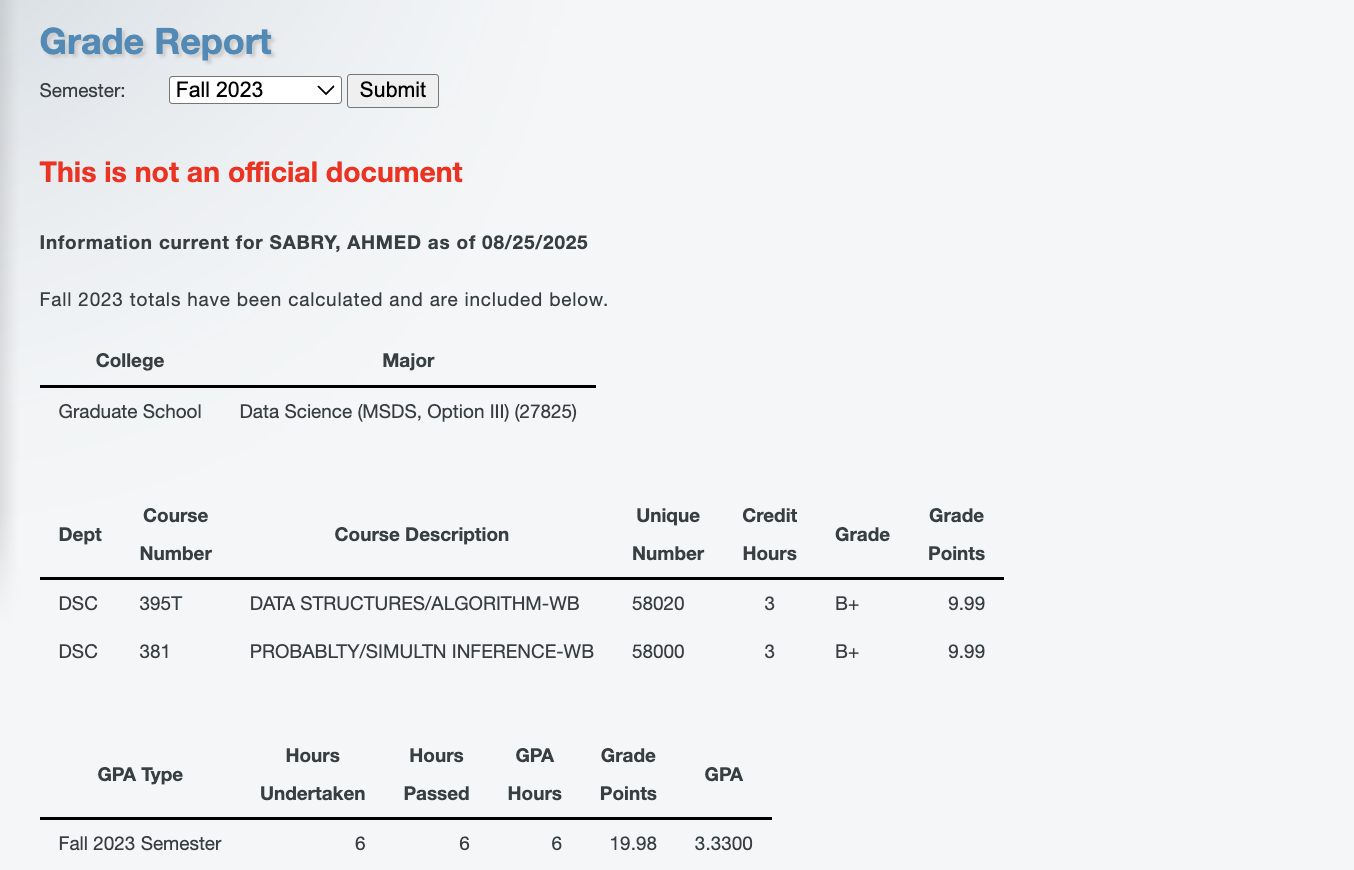First Semester
It’s September 2023 and I just moved to Burnaby from Kelowna - a fresh new start. The summer was very hectic and I was just getting my bearings after packing up the old apartment, moving into a new apartment, and helping family. I now had to balance the 2 courses that I registered for with full time work.
UT Austin splits up its course registration period into a couple of time periods. There is usally 2 different periods, one between early June and late July, and another one in the last 2 weeks of August. The program coordinator had shared the following infografic to help decide on which courses to take.

I had changed my mind a lot and I eventually found myself in the end of the last registration period, so I had to make a choice quick.
I had been debating whether or not I should take 1 or 2 courses and I had also been debating between which of the top 3 courses, Data Exploration and Visualization, Probability and Simulation Based Inference, and Data Structures and Algorithms to take.
I had already taken a Probability course as part of my electrical engineering coursework and I had also taken a Data Structures and Algorithms course and even a Algorithm Analysis course as part of my computer science coursework, so I ended up enrolling in Probability and Simulation Based Inference and Data Structures and Algorithms.
Taking either of these classes alone would not have been a problem at all, but taking them both together while:
- Working full time
- Getting used to the new environment
- Getting back into the studying zone after having been away for a full year
was probably a suboptimal choice.
In all fairness, I had confidence that I could do well in both courses because:
- I had taken courses while working before
- I took a variant of these courses before in undergrad
but I was humbled shortly after.
The Probability and Simulation Based Inference course was split up into 2 sections that were each taught by a different professor, the theoretical Probability portion of the course was taught by Dr. Peter Mueller and the practical Simulation/Inference portion was taught by Dr. Mary Parker.
The theoretical portion was tougher than the practical, but it was easier to score grades on the theoretical portion. The practical portion was very interesting as we used a distribution simulation software called StatKey that really showed how sampling from a distribution really converges the results to the true values. The issue I had with this portion though was the strict grading that made me lose points here and there for incorrect significant figures. I ended up scoring an 89.7% on this course, which just cost me an A- and I ended up with a B+. And of course, understandably, no curving can help tip that grade over the line.
The Data Structures and Algorithms course started off on a very good note where the professor, Dr. Calvin Li, took the time to host a Python bootcamp so that those not familiar with Python can ramp up. The course really dedicated time to helping with practical skills such as developing, testing, debugging, and even some best practices for the first 6 weeks. But, everything after week 6 was exclusively focused on the content of the course, which even though I kind of knew before, was still heavy.I had unfortunatly also messed up on 2 assignment which really cost me the course. I ended up with a 74.7% on the course, which when curved, resulted in a B+.
Looking back at my experience, I probably should’ve only taken 1 class to really get back into the flow, but I don’t think I could have justified it to my younger self. I was after all, excited to finishing this program as soon as possible, and in my eyes, the less courses you take per semester, then more time it’ll take to finish the program.
Here are the certificates and grades that I received after completing this semester:
Certificates


Transcript
